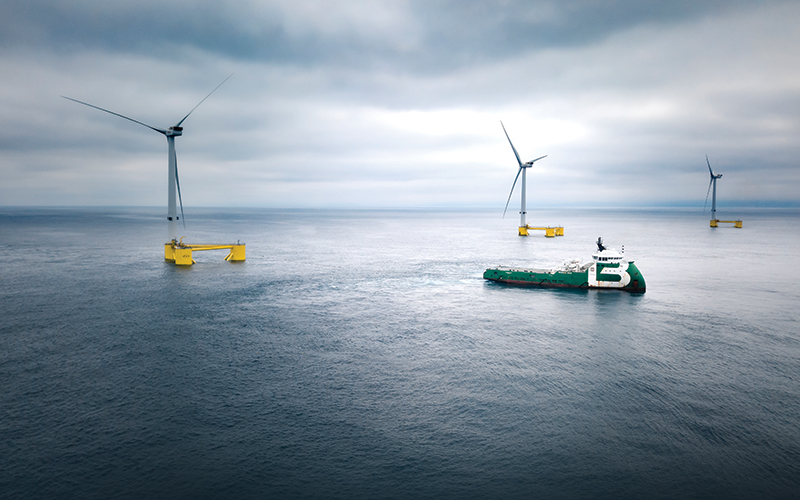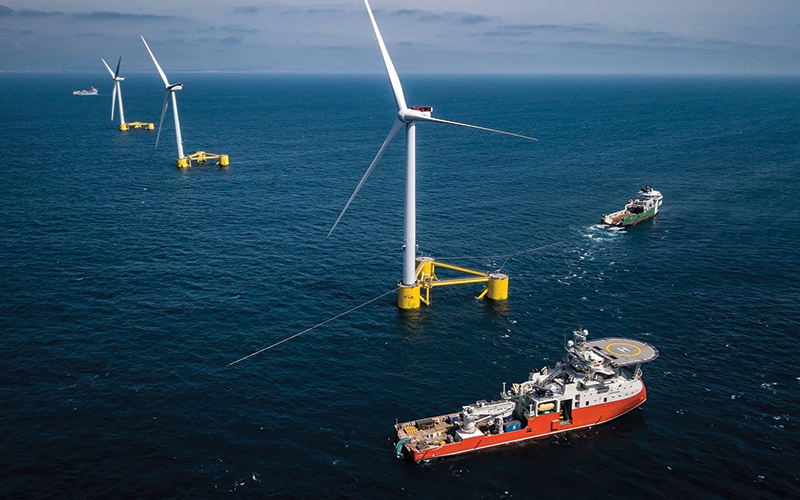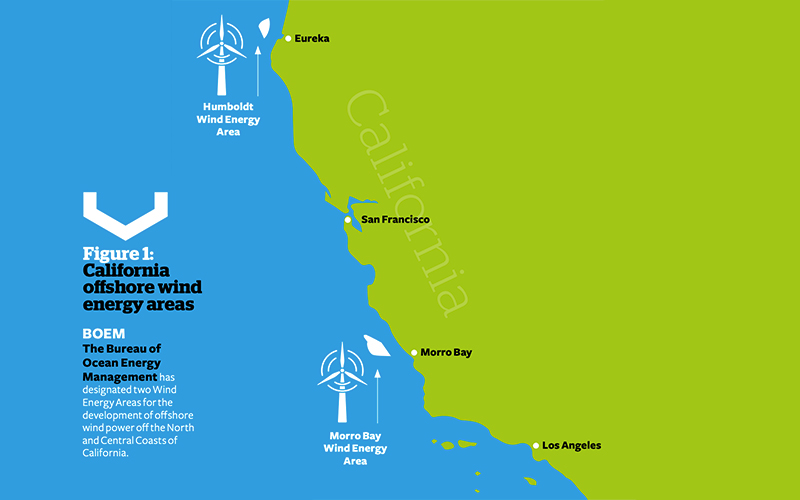The US Golden State: A golden opportunity for offshore wind power
With consistent winds, vast coastlines and a commitment to 100% clean energy, California is ripe to establish itself as a global leader in floating offshore wind power, writes Paula Major, Chair of Offshore Wind California, and VP of Offshore Wind at US Mainstream Renewable Power

California may be best known in the energy industry for its trailblazing solar market, but the landmark Joint Agency Senate Bill 100 report (SB100), published in March 2021, concluded that California will need at least 10GW of offshore wind if it is to achieve its 100% renewable and zero-carbon goals by 2045 in a cost-effective manner.
While this would be a positive step, 10GW represents just a small fraction of the approximately 140GW of new renewable energy that is needed for California to reach its full decarbonisation goals.
California gets serious about offshore wind
The California Energy Commission is now working to establish clear offshore wind targets for 2030 and 2045, as directed by state legislation (Assembly Bill 525), through engagement with the industry and stakeholders. The focus is on setting out plans to support the development of a thriving and world-leading floating wind industry by 2030 and beyond.
Even before the Bureau of Ocean Energy Management (BOEM) announced that it would lease the first 4.6GW of available deep-water leases by the autumn of 2022, California had the attention and engagement of the major global offshore wind players. Offshore Wind California, a coalition established by seven companies in 2019, now boasts 40 member companies, ranging from environmental consultants to large international energy companies.
The West Coast catches up

The Morro Bay Wind Energy Area off the state’s Central Coast will have a capacity of approximately 3GW, and access to 5–6GW of interconnection capacity, according to a staff report from the California Independent System Operator.
The vision for California is deploying floating offshore wind at scale and with speed
In Northern California, meanwhile, the Humboldt Wind Energy Area will have approximately 1.6GW of leases available, according to BOEM. Ahead of the auction, BOEM will issue a Proposed Sale Notice to gather feedback on several items relating to the proposed auction. The issuing of a Final Sale Notice will follow 45 days before the auction, containing details of the final leases being made available, the final list of qualified bidders, and specific details of the auction rules and bidding process.
The time is now for floating wind
The UK’s recent ScotWind announcement, awarding 15GW of floating wind project leases, offers proof that floating wind is set for commercial-scale development on the global stage. According to the Scottish government, for every 1GW of capacity awarded, these projects will secure at least US$1.36bn in supply chain investment.
The vision for California involves deploying floating offshore wind at scale and with speed. The new state budget proposal issued by California Governor Newsom earlier this year earmarked US$45m for offshore wind infrastructure in the fiscal year 2022–2023. A new Offshore Wind Energy Deployment Facility Improvement Program is planned to advance capabilities for deploying offshore wind in federal waters with improvements in facilities planning and development.

California still has plenty of challenges if it is to establish itself as a global leader in floating wind. Unlike other US states, there are no firm offshore wind power offtake commitments or targets as yet. Ports will require investment, and transmission systems will need extensions in the north and upgrades elsewhere.
The challenges are considerable, but the opportunities are tremendous for sowing the seeds to grow a long-standing thriving industry.
Mainstream Renewable Power
Mainstream Renewable Power is one of the world’s most successful gigawatt-scale renewables platforms developers across wind and solar. In May 2021, Aker Horizons acquired a 75% equity stake in the company, accelerating its plans to deliver its pipeline of over 16GW of clean energy. Mainstream is one of the world’s most successful developers of offshore wind at scale, having developed and consented 20% of the UK’s offshore wind capacity in operation or under construction – including the world’s largest operational offshore wind plant, the Hornsea zone.
Rich with opportunities
Local and or regional supply chains will be needed to support this new billion-dollar industry along the West Coast –from California to Oregon (3GW by 2030) and Washington.
From design, manufacture and transport of equipment, to installation and a host of activities and associated services, meeting the challenge will require a range of expertise to deliver the various aspects of each offshore wind project.
With the significant water depths (500–1,300m) and hundreds of floating turbines along the Central and North California coasts, vast lengths of mooring lines will be needed – at least 800km to support the 300-plus turbines in California alone. Along with onshore infrastructure, a range of engineering services, environmental monitoring, surveys, protection services, remote operated vehicles, divers, other environmental activities and ports upgrades will be needed. Hydrogen, storage, and hybrid solutions also offer vast opportunities for partnership, investment, and innovation.
The next frontier in renewables
Government agencies’ ongoing progress in California to bolster the industry by committing to offshore wind targets and supporting a supply chain will help drive California and the entire US West Coast to be the next frontier for floating offshore wind.
By Paula Major, VP Offshore Wind – US Mainstream Renewable Power, Chair of Offshore Wind California, Board Member of Business Network Offshore Wind, and Council Member of America Clean Power Offshore Wind Council
Image credit | Principle Power






Follow us
Advertise
Free e-Newsletter